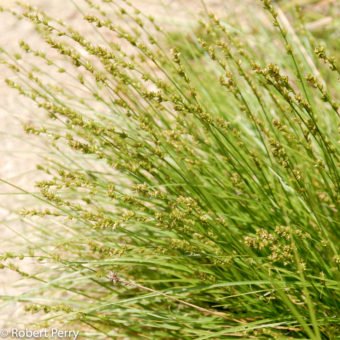
Berkeley sedge
Plant Type: Grass, Sedge
Water Needs: Low 2
Exposure: Moderate shade, Morning sun, All day sun
Height: 1 ft. - 1.5 ft. Width: 1.5 ft. - 3 ft.
The Meadow Garden design evokes a grassy and lush natural area in a way that can provide a relaxed, simple, and beautiful garden that requires much less water and care than a traditional lawn.
It features a mix of larger and smaller ornamental grasses and grass-like plants to provide a sense of structure and adds in some simple flowering accents for beauty and diversity. People wanting something not much more complicated than a traditional lawn, but also desiring an informal feel and more visual interest may be interested in the Meadow Garden.
These plants require relatively low amounts of water, but can also tolerate higher amounts, making the Meadow Garden great for new designs, around existing medium and even high water use trees, and in "transition zones" between lawns and low water use landscapes.
People with larger yards may choose to feature a Meadow Garden in part of their yard, often with an area featuring a planting of Western Meadow Sedge as a place to take shoes off and enjoy the feeling of feet in the grass, in combination with one of the other plant palettes for other areas of the yard.
Note: highly botanically diverse meadow gardens can become very complex to maintain. For our Meadow Garden design and plant list, we chose a simple list of tough and easy to maintain plantings, achieving the essence of a naturalistic meadow garden look, while keeping care very simple.
This plant palette is available as an option for the Waterwise Community Center's Landscape Design Assistance Program. Visit cbwcd.org/desgin for more details.